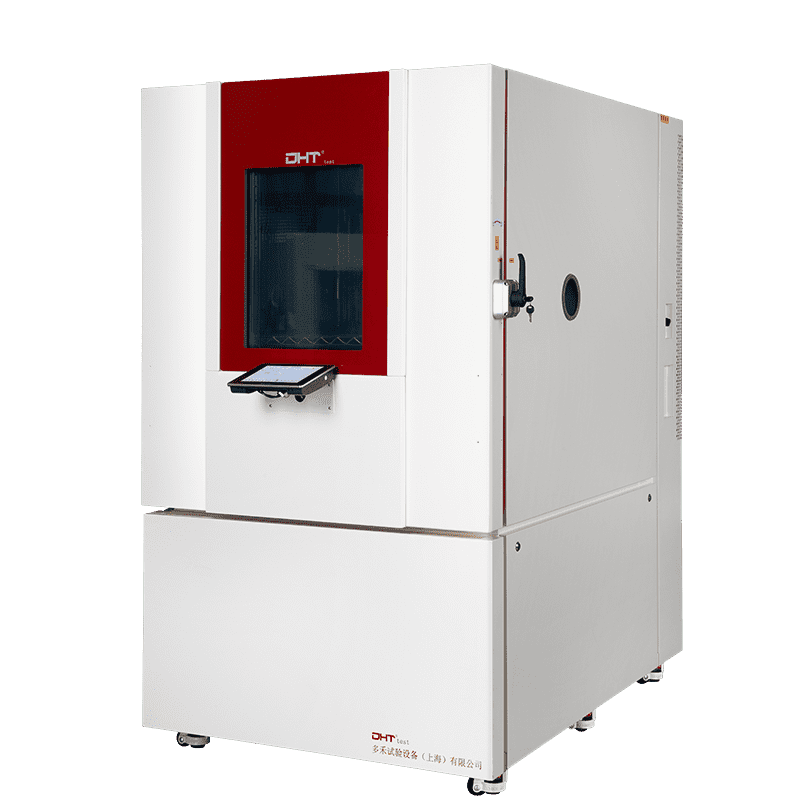Pourquoi les tests de batteries doivent-ils embrasser les « extrêmes »?
-
Dans les zones tropicales, les batteries peuvent être exposées à long terme à une chaleur de +60°C et à une humidité élevée.
-
Dans des environnements de haute altitude ou aéronautiques, la basse pression et le faible oxygène deviennent des préoccupations critiques.
-
Dans les régions froides, les batteries doivent commencer et fonctionner de manière fiable à -40°C ou en dessous.
-
Dans les scénarios de transport, les batteries sont vulnérables aux chocs, aux vibrations et aux changements rapides de température.
-
Pour les tests de sécurité, les batteries doivent supporter des simulations de fugue thermique et des conditions de faute extrêmes.
Six types d'environnements extrêmes simulés par les chambres de test environnementales des batteries
Vieillissement à haute température (+60°C à +85°C)
-
Évaluation de la durée de vie dû au vieillissement thermique
-
Test de stockage chargé à haute température
-
Comportement de déséquilibre thermique dans les packs de batteries
Températures ultra-basses et test de démarrage à froid (-40°C et en dessous)
-
Test charge/décharge à basse température
-
Validation de la performance de démarrage à froid
-
Évaluations de tolérance à la sécurité sous froid extrême
Stress de haute humidité et de condensation (Humidité >90% RH)
-
Vieillissement à haute humidité à long terme (e.g., 40°C / 95% RH pendant 72 heures)
-
Formation de condensation pendant le cycle thermique
-
Scénarios de stress combiné chaleur-humidité
Changement thermique rapide et choc thermique (≥10°C/min)
-
Cycles thermiques rapides (≥10°C/min)
-
Cycles multiples entre -40°C et +85°C
-
Simulation combinée de choc thermique et de choc froid
Simulation de haute altitude et de basse pression (en dessous de 60 kPa)
-
Pression simulée pendant le transport aérien
-
Reproduction de l'environnement de haute altitude (5,000m+)
-
Validation de l'étanchéité et de l'intégrité structurelle des cellules
Test de fugue thermique et de condition de faute
-
Surcharge/décharge suivie de périodes de repos
-
Ignition déclenchée via des sources de chaleur localisées
-
Test de réponse à court-circuit ou dommage mécanique
Stratégies de configuration de test selon le scénario d'application
● Test de batterie de puissance pour véhicules électriques
-
Systèmes de cycles thermiques rapides de grande gamme
-
Chambres de test marchables de grand volume pour la simulation de pack complet
-
Intégration d'interface avec les systèmes BMS/VCU
● Test de batterie de stockage d'énergie
-
Capacité à haute humidité à long terme (e.g., 95% RH pendant 1,000 heures)
-
Surveillance multi-points de la température et des données
-
Compatibilité avec EMS et protocoles de communication
● Test de batterie pour électronique grand public
-
Contrôle de température/humidité de haute précision (±0.5°C / ±21% RH)
-
Cellules de test compactes et modulaires pour les tests parallèles
-
Soutien à l'analyse visuelle et aux plateformes de traitement de données par lot
Qu'est-ce qui fait qu'une chambre de test environnementale de batterie est vraiment "professionnelle"?
-
Portée & Précision de contrôle: -70°C à +150°C, 10% à 98% RH, ≥5°C/min taux de changement de température
-
Caractéristiques de sécurité: Protection contre la sur-température, portes antidéflagrantes, systèmes de décharge de pression, suppression d'incendie
-
Fonctions intelligentes: Opération à distance, téléchargement de données dans le cloud, surveillance et alertes de défaut, journalisation automatisée des tests
-
Modularité et extensibilité: Intégration avec exposition UV, systèmes de basse pression, modules de vibration pour tests multi-physiques
Conclusion: Pousser les tests à l'extrême, construire des produits qui durent
FAQ
Q1 : Pourquoi les simulations environnementales extrêmes sont-elles nécessaires pour le test des batteries ?
A1 : Les batteries fonctionnent dans des conditions diverses et difficiles telles que la chaleur élevée, le froid extrême, l'humidité élevée, la basse pression et les changements rapides de température. Les simulations environnementales extrêmes dans les chambres d'essai des batteries aident à identifier les mécanismes de défaillance potentiels, à optimiser la gestion thermique et à garantir la fiabilité et la sécurité du système tout au long des étapes de R&D, de validation et de certification.
Q2 : Quels types de conditions extrêmes les chambres d'essai environnementales pour batteries peuvent-elles simuler ?
A2 : Les chambres environnementales modernes pour batteries peuvent simuler le vieillissement à haute température (+60°C à +85°C), les températures ultra-basses (-40°C et en-dessous), l'humidité élevée (>90% HR), les changements thermiques rapides (≥10°C/min), les environnements en haute altitude/basse pression (en-dessous de 60 kPa), et les conditions de défaillance thermique ou d'emballement. Ces capacités permettent des tests complets dans les applications de véhicules électriques, de stockage d'énergie et d'électronique grand public.
Q3 : Quelles caractéristiques définissent une chambre d'essai environnementale professionnelle pour batteries ?
A3 : Une chambre d'essai environnemental de batterie professionnelle offre de larges plages de contrôle (-70°C à +150°C, 10–98% d'humidité relative), une régulation précise de la température et de l'humidité, des capacités de changement thermique rapide (≥5°C/min), des caractéristiques de sécurité telles que la protection contre les surchauffes et des portes antidéflagrantes, des fonctions intelligentes comme l'opération à distance et la journalisation de données sur le cloud, et une extensibilité modulaire pour les essais multiphysiques, y compris les modules d'exposition aux UV, de basse pression et de vibration.


